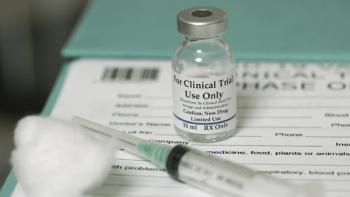
Revolutionizing dry eye management: Insights on perfluorohexyloctane from TFOS meeting
Dr. Shane Kannarr discusses findings on perfluorohexyloctane at the Tear Film and Ocular Surface conference, highlighting its rapid symptom relief and enhanced patient satisfaction.
In a recent interview with Shane Kannarr, OD, at the Tear Film and Ocular Surface (TFOS) Basic Science and Clinical Relevance meeting in Venice, Italy, key insights were shared about his poster on early symptom relief and patient satisfaction with perfluorohexyloctane (PFHO) for treating dry eye disease. Kannarr emphasized the multifactorial nature of dry eye and the challenges practitioners face in retaining patient adherence to treatment regimens. Notably, PFHO has demonstrated significant efficacy, with symptom relief reported as early as three days after initiation of therapy.
Patient satisfaction was quantitatively assessed using a visual analog scale, where participants ranked their most troublesome symptoms. Remarkably, a 40% reduction in the most bothersome symptom was observed within three days. The top three symptoms identified by patients included dryness, blurred vision, and eye irritation, reflecting common concerns in dry eye management.
Kannarr highlighted the unique attributes of PFHO, which is a preservative-free, water-free topical solution that forms a protective monolayer to reduce tear film evaporation. This innovative approach not only provides rapid symptom relief but also demonstrates continued improvement over two weeks, with significant reductions in overall dry eye awareness and vision fluctuations.
He discussed patient demographics that may benefit most from PFHO, particularly those requiring immediate relief and those who have struggled with ongoing dry eye symptoms despite previous treatments. This new therapeutic option may enhance the treatment landscape for individuals who have not found success with standard therapies.
In summary, Kannarr’s insights underscore the importance of addressing both the clinical signs and symptomatic relief of dry eye disease, advocating for PFHO as a promising option for improving patient satisfaction and outcomes. This novel approach may transform how optometrists manage dry eye, providing patients with quicker, more effective relief.
Newsletter
Want more insights like this? Subscribe to Optometry Times and get clinical pearls and practice tips delivered straight to your inbox.













































.png)


